V-Mail Anatomy
The V-Mail system used by U.S. forces during the Second World War involved the use of a form (there were several types and versions) upon which letters, addresses and return addresses were written or typed before being photographed. The following images show the “anatomy” of typical V-mail forms and envelopes, and samples of envelopes in which blank forms were sold.

The front of a V-Mail form, with the instructions upside down relative to the spaces for the return address and address. These addresses would be used only if the V-Mail form could not be photographed, in which case it would be used like an ordinary folded letter. (Another version has the instructions printed right side up.) See a large image.

An enlarged image of V-Mail instructions to the sender. See a large image.
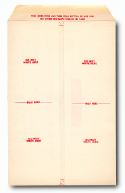
The back of a V-Mail form, with flaps closed. See a large image.
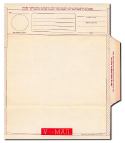
The inside of an unused V-Mail form. See a large image.

Civilians could buy packets of V-Mail forms and envelopes from civilian suppliers. See a large image.

Another type of V-Mail packet available commercially in the U.S. during the Second World War. See a large image.
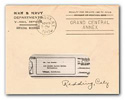
A typical U.S. V-Mail envelope, designed to show the recipient’s address through a window. This particular V-Mail was not posted by Phil; none of his V-Mail envelopes have survived. See a large image.
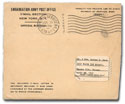
An example of a V-Mail envelope designed to be returned to the sender. Note that the window for the address is placed to show the return address originally written on the V-Mail form, clearly seen in this large image.
In this particular case, the intended recipient of the V-Mail had been killed in combat. See an image of the enclosed letter, which was folded for insertion in the envelope, with a simple, clearly visible explanation, written in pencil: "Deceased".
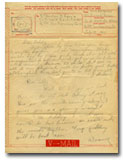
When a completed V-Mail form like the one shown could not be soon be processed soon, it was forwarded as ordinary mail.
The example shown is "free-franked": instead of paying postage, servicemen on active duty only had to write the word "free" in the space provided for a stamp and indicate what military unit they belonged to, assuming that the sender was willing to have the letter carried by surface transportation. If they wanted airmail transmission, they had to pay six-cents airmail postage. This particular V-Mail letter is unusual in that it contained not just one message, but two, obviously from friends writing to a mutual friend.